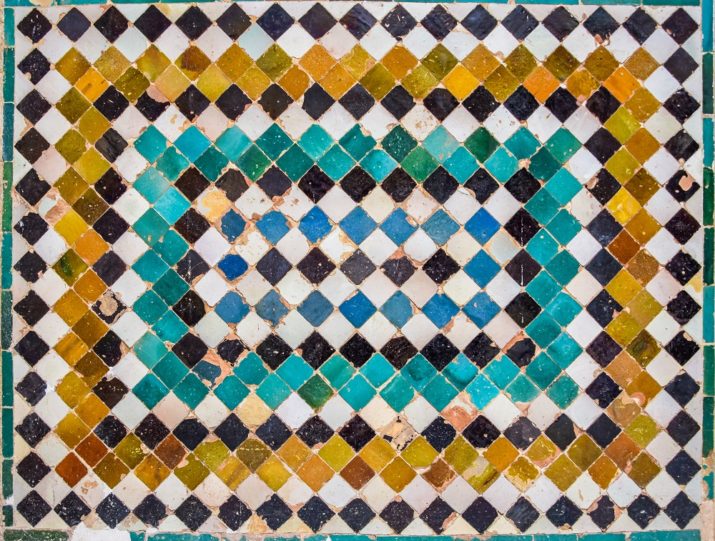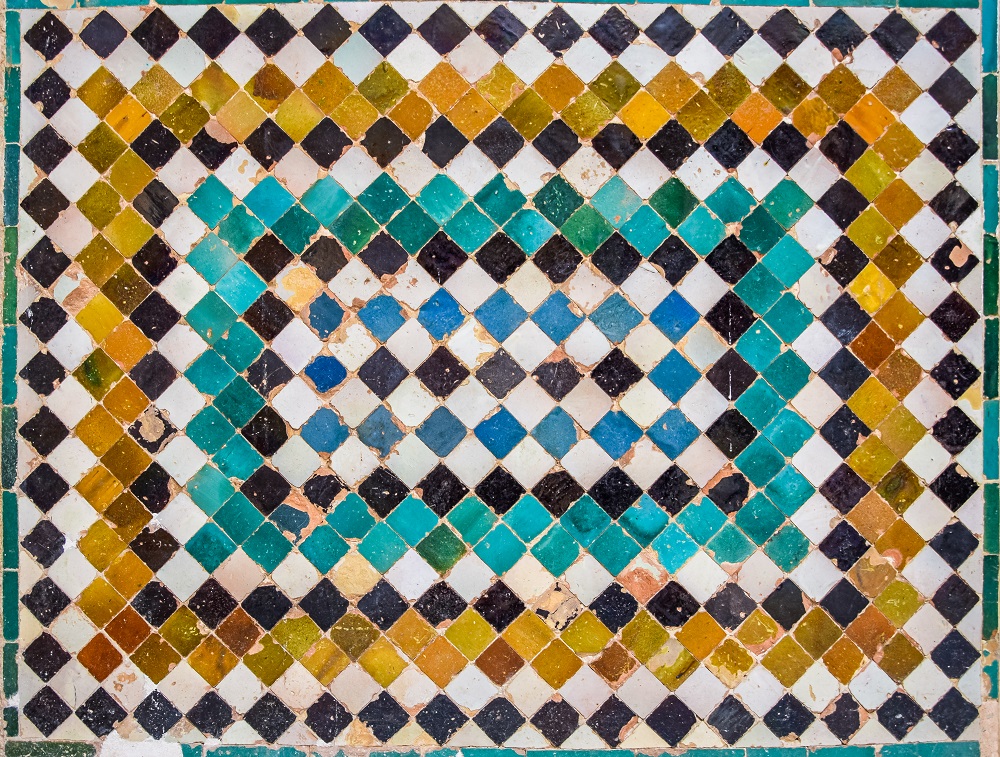

An introduction to our special feature, Beyond Eurafrica: Encounters in a Globalized World.
In 1957, as African states were gaining independence from European colonial powers, in a text in which he discussed French “presence” and “abandonment” in Africa, François Mitterrand, future President of the French Republic, wrote that “without Africa, there will be no history of France in the twenty first century.” Mitterand’s delving into what it would mean for African and French becomings if France were to either “keep” or “lose” Africa has generated ample commentaries by politicians and historians. Whichever interpretation is favored, what these words certainly exemplify is the complex interconnectivity maintained in the post-colonial era between nations that had been colonized and their ex-colonial rulers. This special feature seeks to cast light on the multi-directional, multilayered, and multi-scalar ties that exist between African nations and European nations, between Africa and Europe as pan-regions, and—beyond nation-states and regions—between African people and European people, across time and space.
Of course, the obvious question when speaking about European-African relationships is that of enduring colonial legacies, which can be apprehended at various scales depending on the phenomena observed, the assumptions made, and the disciplinary or epistemological perspectives that are privileged. In an effort at interdisciplinarity, it is the richness of research paths taken by Africanist scholars that this feature proposes, from a consideration of Europe and Africa as coherent entities on the global stage to tailored non-monolithic approaches of those entangled and hybrid spaces. Together, the works gathered here emphasize not only the validity of supranational level inquiries into the interrelatedness of a “Europe” with an “Africa,” but they also underscore the myriads bilateral intertwinings between one among many European nations and one among many African nations, as well as between individuals or specific groups. While the character of these connections almost always rests on colonial history and post-colonial geo-political asymmetric arrangements, they also reveal that the bonds between the peoples or Europe and the peoples of Africa did not end with independences, and that they subsist not only through political and economic flows, but also through flows of people, ideas, and cultures, fostering foyers of creativity embodied by artists such as Nú Barreto, Atta Kwami, and El Anatsui, whose artworks appear in the visual exhibit “It Dwells Within,” in consort with Sokari Douglas Camp’s rendition of William Blake, Botticelli, and Michelangelo in “Primavera,” in which she superimposes European icons with novel sensibilities about the environment, social justice, and cultural resilience in overt cultural hybridization she calls “Africanization,” all the while playing on the irony of her medium, the oil barrel, symbolic of resource extraction. The literary works of poets and fiction writers, whose language of choice for creative expression may actually be the colonial language once imposed, indicates that linguistic spheres such as “Francophonie” remain greatly influential in maintaining a sense of commonality and collective imaginary across borders, and even linking to a much wider world that reaches into Asia, South and North America, and as far as Oceania.
When looking at post-colonial European powers in Africa, the nations directly implicated are usually considered to be Belgium, Britain, France, Italy, Portugal, Spain, the Netherlands, Germany, and Denmark (Denmark-Norway), which all held territories at some point in the history of colonization of the African continent and Madagascar. While each ex-colonial power kept specific political, economic, cultural, and linguistic connections with ex-colonies after independence was reached—as illustrated by Daniel Mengara’s article on “Françafrique,” depicting the French political and cultural post-colonial context in Africa through the example of Gabon—the emergence and consolidation of the European Union as a supra-national actor has also come to structure the post-colonial era through the EU joint vision of extra-European policy. Thus, the concept of “Eurafrica” surfaced to capture the construction of a European “African policy” agenda, similar to what has been called in France, for example, “la politique Africaine de la France,” but at the scale of Europe. The tug between understanding the Africa-Europe nexus in the twenty-first century through the role of this additional layer of decision-making on one side, and less globalized considerations on the other, is well exposed in Veit Bachmann’s commentary. Bachmann’s piece interrogates the usefulness of the very concept of pan-region in scrutinizing mutual effects between both continents, while Peo Hansen and Stefan Jonsson’s article provides evidence for the historical establishment of Eurafrica as a deliberate and explicit space of continued intervention, authority, and exploitation, validating the concept as a useful tool to analyze the emergence of a European apparatus meant to govern precisely the Africa-Europe relation. For them, Eurafrica is an effective conceptualization that addresses and combines various European ambitions arising at the time when European African colonies became independent states in the concomitant context of the project of a unified Europe, for which European states came together to build a common blueprint for economic, cultural, and political endeavors in domestic and foreign affairs. However, for Bachmann and others in the feature, the pan-regional approach can only be detrimental to evaluating the true nature of the Africa-Europe relation because it occults differences, reproduces North-South binaries and racialized lines, erases national, local, or even personal shared histories, in effect over-simplifying transcontinental and cosmopolitan realities and stripping away moral and political agency from localized actors. However, as a counter-example, speaking about global and regional security threats in his interview, Joachim Koops supports a regional tactic as he describes the involvement of the “inter-organizational triangle” of the United Nations, the European Union, and the African Union in providing peace-keeping solutions based on cooperation. Likewise, Thaddeus Sunseri’s article on global scientific collaboration for the fight against a cattle disease in Africa and its recent final eradication comforts, to some extent, the regional approach to the relationship between Europe and Africa in the context of an emerging globalized system of disease control over the last century. The globalized system of climate change mitigation that is currently being forged might well constitute another example of legitimated pan-regional strategical action in the face of the global environmental crisis, which is met with varied levels of vulnerabilities across global regions.
Whether we understand Africa and Europe as pan-regions or as mosaics of sovereign nations with very different contexts that require dedicated treatments, the common history of the two continents is importantly one of multi-directional circulations, transcontinental mobilities, and diasporas, starting with the eighteenth and nineteenth centuries triangular trade that caused massive forced migrations, as well as the arrival of the first colonial settlers on African soil after the Berlin Conference and the European “Scramble for Africa.” Migration theorists often contend that for every flow there is a counter-flow. This topic is at the center of Amy Hubbell’s research on French colonial “returnees” and their memory and imagination of the Algeria they left after independence as they were “repatriated” to a national context that was mostly hostile to them after the French-Algerian colonial war. Although “one of Europe’s largest diaspora communities in the twentieth century,” for long the Pied-Noir experience had been silenced, as had that of returnee settlers in other European nations (for example the retornados in Portugal). As memory studies have gathered momentum, those memories have come to the fore more openly. Here, the trauma of war violence and even physical dismemberment in childhood, as well as the painful memory of brusque and permanent departure, are analyzed through artistic endeavors. David O’Kane and Anna Arnone focus on another tragically violent event of migration in their article on the 2013 mass drowning of 500 Eritrean migrants in the Mediterranean Sea, which can be envisaged as a hyphen between Africa and Europe, the ultimate geographic African-European space perhaps, and a deathscape. The authors point to the failure of pan-European policy in dealing with refugee flows and the exclusion that results from inadequate legislative instruments, at the same time showing that the border between sea and land that the island of Lampedusa represents is not simply an Italian border, but indeed a “European” border. Contributing further to the migration theme, anthropologists Pamela Feldman-Savelsberg and Alma Gottlieb exchange thoughts in a collegial conversation about their respective scholarly commitment to African diasporas in Europe, unveiling yet other flows and counter-flows, as in the case of those who “reverse-migrate” to Cabo Verde.
In order to demonstrate the bilateral ties that have united specific nations of Europe with those of Africa in the post-colonial order, this special feature also presents a series of case studies that exemplify how the history of Europe in Africa and Africa in Europe may not be systematized easily. Adriana Chira introduces the “forgotten colony” of Equatorial Guinea and its historical relationship with Spain, while Marcia Schenck delves into contract labor migration to East Germany in the 1980s from Angola and Mozambique. Nina Berman describes a new scramble for Africa and lingering colonial attitudes in the involvement of Germans in Kenya, and Michael Meeuwis points to the colonial role of the Dutch in both the (then) Belgian Congo and South Africa. Margaret Andersen highlights an interesting case of French colonial legislation over family allowances for Moroccan workers. Annalisa Butticci examines new contemporary socio-cultural religious spaces developing out of the influx of Nigerian and Ghanaian migrants in Italy through an examination of transcultural “Catho-Pentecostal” aesthetic culture of practice. The collaboration between scholars Chris Boonzaaier from South Africa and Harry Wels from the Netherlands stresses that the interconnectedness between Europe and Africa is also constituted by individuals who shape it through shared projects, here through a common engagement in South African community-based tourism development that prizes social entrepreneurialism, community empowerment, and people centeredness.
Also exhibited in these studies are the varied methodologies used to investigate the many ways Africa and Europe are brought together. The value of ethnographies is unmistakably clear in several of the case studies, as well as in our interview with Brandeis Professor Janet McIntosh, who describes in EuropeNow Campus how fieldwork in Kenya has been essential in shaping her teaching and her research at the intersection of linguistic anthropology and psychological anthropology. She is joined by colleague Carina Ray in sharing with EuropeNow’s readers their respective course syllabi on Colonialism and Postcoloniality in Africa: Encounters and Dilemmas and Race, Sex, and Colonialism. Together, these courses explore issues of race in the post-colony, miscegenation, gender, and power asymmetries, and demonstrate that intellectually grasping an Afro-European space requires an interdisciplinary engagement encompassing fields such as postcolonial studies, whiteness studies, critical race studies, or decolonial studies and gender studies, among others.
With this special feature, EuropeNow confirms the web of connectivity that exists between nations of Europe and nations of Africa, as not only rooted in geopolitics and global economic flows, but also increasingly in global cultural flows, which support the enduring linkages and reciprocal influences between the two continents and shape the ways in which both Africans and Europeans apprehend the local and the global. It is particularly significant as these nexuses are under pressure from other global actors, which are re-contextualizing the Europe-Africa relationship within a wider global arena, as seen for instance in the attempts by China or the US to strengthen their respective relevance and influence in the African sphere by challenging the idea of Africa as Europe’s exclusive preserve.
Hélène B. Ducros holds a law degree and Ph.D. in geography from the University of North Carolina Chapel Hill. She is Chair of the Research Editorial Committee at EuropeNow and lecturer in international studies at the University of North Carolina Wilmington.
Research
– “A Forgotten Colony: Equatorial Guinea and Spain” by Adriana Chira
– “African Pentecostals in Catholic Europe: An Aesthetic Approach” by Annalisa Butticci
– “Family Allowances and the Principle of Universalism in Post-War Morocco” by Margaret Andersen
– “Layering Over the Wounds of Algeria in Contemporary Pied-Noir Art” by Amy L. Hubbell
– “International Collaboration and Rivalry in the Early Fight Against Rinderpest” by Thaddeus Sunseri
– “Scrambling for Africa, Again: Germans in Kenya” by Nina Berman
– “A Brief History of Dutch in Africa” by Michael Meeuwis
Commentary
– “Eurafrica is Dead. In Fact, it Never Existed” by Veit Bachmann
Fiction
– Excerpt from Lalana by Michèle Rakotoson, translated from the French by Allison M. Charette
– “Jujube” by Ubah Cristina Ali Farah, translated from the Italian by Hope Campbell Gustafson
– “Saving Agu’s Wife” by Chika Unigwe
Poetry
– Five poems by Mohammed Kaïr-Eddine, translated from the French by Baba Badji
– Five poems by Léopold Sedar Senghor, translated from the French by Baba Badji
– Three Poems by Nathan Trantraal translated from the Afrikaans by Alice Inggs
– Nine Poems by Tanella Boni, translated by Todd Fredson
– A Prose-Poem Series by Vincent Broqua, translated from the French by Cole Swensen
Reviews
– Boys Quarter by Chukwuma Ndulue, reviewed by Naomi Falk
– Decolonization: A Short History, reviewed by Michael Collins
– Flip the Script: European Hip Hop and the Politics of Postcoloniality, reviewed by Séverin Guillard
– The Borders of Europe: Autonomy of Migration, Tactics of Bordering, reviewed by Ozden Ocak
– Combatants of Muslim Origin in European Armies in the Twentieth Century: Far From Jihad, reviewed by Christopher Tozzi
Interviews
Visual Art
– It Dwells Within, an art series curated by Kayla Maiuri
Campus Spotlight: Brandeis University
– Syllabus: “Colonialism and Postcoloniality in Africa: Encounters and Dilemmas” by Janet McIntosh
– Syllabus: “Race, Sex, and Colonialism” by Carina E. Ray
Photo: Colourful tiles in the Moorish palace of Alhambra, Granada, Spain by Eszter Szadeczky-Kardoss | Shutterstock
Published on March 1, 2018.




